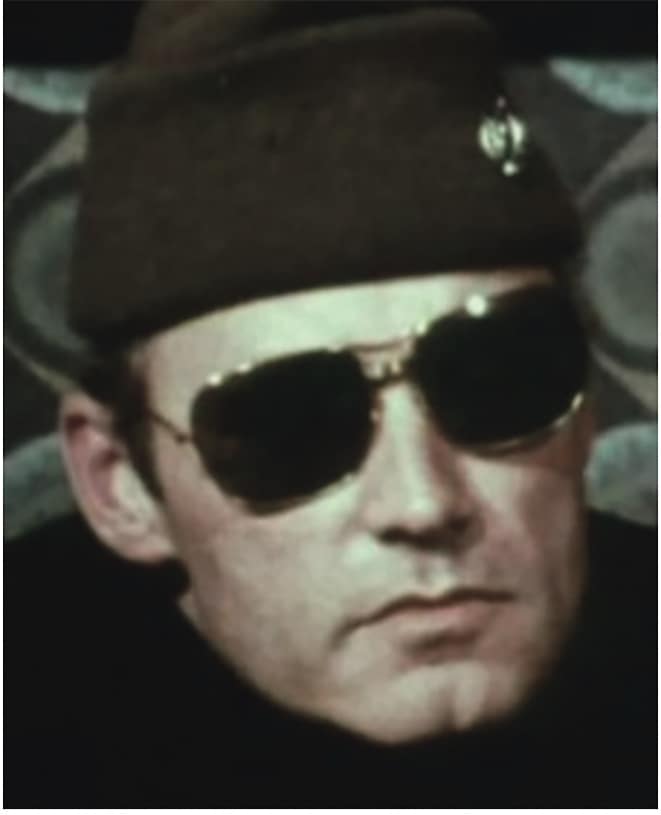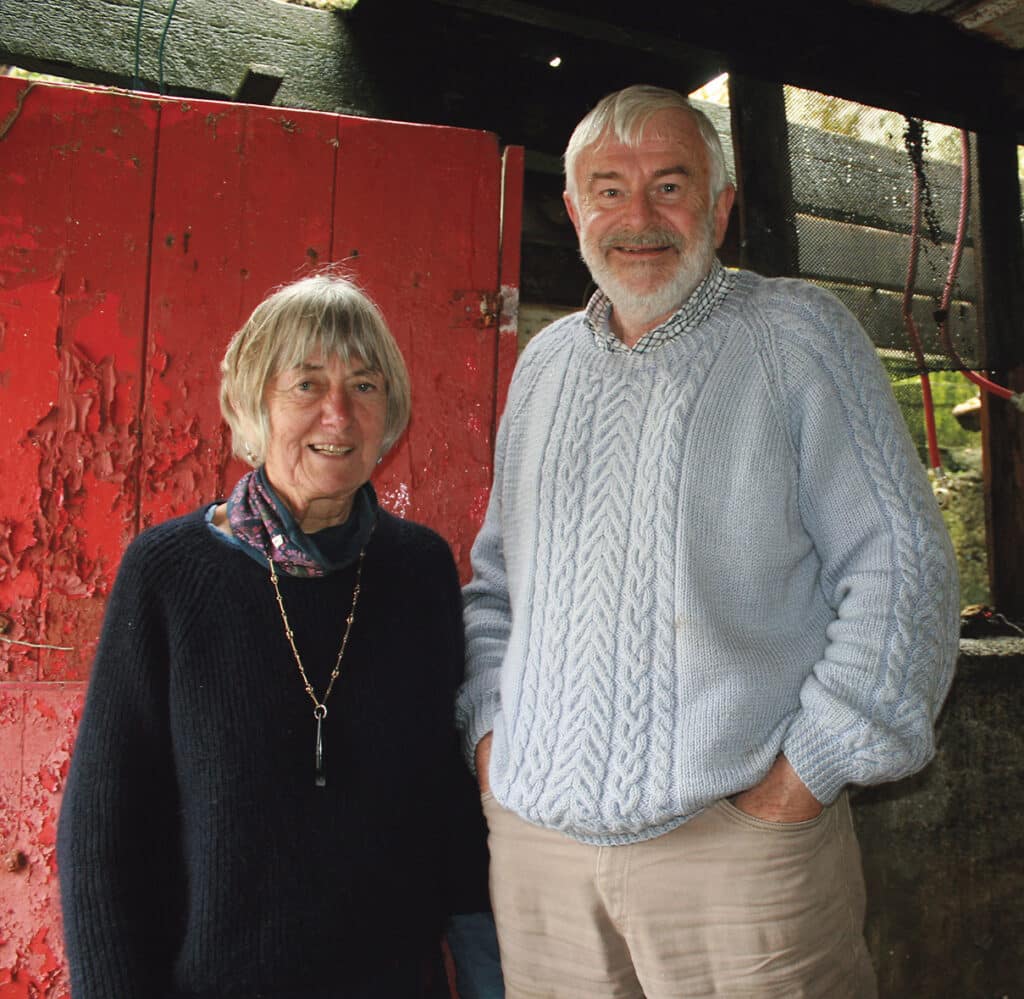“He will also be remembered as a major influence in drawing loyalism away from sectarian strife” – Gerry Kelly
There were many key but controversial figures who featured throughout the Troubles in Northern Ireland on both sides of the conflict. On the Republican side, there was Gerry Adams, Martin McGuinness, Gerry Kelly and Brendan Hughes. On the Loyalist, names such as Johnny Adair, Billy Wright, Lenny Murphy and Gusty Spence stand out. All played pivotal roles in either the armed or political struggle for peace in Northern Ireland with some playing a part, rather paradoxically, in both the armed and political struggle. Gusty Spence was one of those who sat on both sides of the fence.

Despite at one time being a hardliner in favour of war, he is an example of how attitudes to war can always sway towards seeking peace by political rather than by violent means. Spence was so heavily involved in the use of violence, including bombs, urban warfare and guerrilla tactics that he was one of the leading members of the Ulster Volunteer Force (UVF) for a long period of time, eventually going on to become the head of the organisation. During the Troubles if there was one man you could have confidently said would never drop his weapon for a pen and paper, it was Gusty Spence. However, not only did he choose the political route for peace, he was once again one of the leading proponents; in favour of the Good Friday Agreement and crucial in securing its passing, Gusty Spence was the dichotomy of man personified.
Spence’s early life was not dissimilar to most born in the North of Ireland at the time. Born in Shankill, Belfast in 1933, Gusty grew up in a Protestant working-class family. He left school at the age of fourteen and began working in the shipyards, where he became involved in the trade union movement. In 1953, he joined the British Army and served in Germany for three years before returning to Belfast. Spence became involved in politics in the late 1960s, as tensions between Northern Ireland’s Catholic and Protestant communities began to escalate. He was a member of the Ulster Protestant Volunteers (UPV), a loyalist group that emerged in response to the growth of the Irish Republican Army (IRA). The UPV carried out a number of bombings and shootings; and in 1966 Spence was arrested for his involvement in a bomb attack in Belfast. His older brother Billy Spence was a founding member of the UPA, otherwise known as the Ulster Protestant Action group. The Spence’s were an extremely Loyalist family.
In 1969, Gusty Spence was released from prison and became involved in the UVF. The UVF’s primary goal was to defend Northern Ireland against Irish republicanism and to resist any attempts to merge Northern Ireland with the Republic of Ireland. Spence played a key role in organising the group, which carried out a number of bombings and shootings during the Troubles. Spence’s political awakening came in the wake of the civil rights movement in Northern Ireland. The movement, which sought to end discrimination against Catholics, was seen by many Protestants as a threat to their identity and way of life. He joined the UVF with the aim of resisting Irish republicanism and defending Protestant communities from perceived threats, quickly rising through the ranks to become its leader in the early 1970s. Under his leadership, the UVF became one of the most active and deadliest paramilitary groups in Northern Ireland, carrying out numerous attacks on civilians, including the Dublin and Monaghan bombings in 1974, which killed 33 people.
In 1966, his involvement in the random murders of innocent Catholics earned him a life prison sentence. On May 27, Spence ordered four UVF men to kill an IRA member, Leo Martin, who lived on the Falls Road. Unable to find their target, the men drove around in search of any Catholic instead. They shot dead 28-year-old John Scullion, a Catholic civilian, as he walked home. Spence later wrote: “At the time, the attitude was that if you couldn’t get an IRA man, you should shoot a Taig, he’s your last resort”. On June 26, the same gang shot dead Catholic civilian 18-year-old Peter Ward and wounded two others as they left a pub on Malvern Street in the lower Shankill. Two days later, the government of Northern Ireland used the Special Powers Act to declare the UVF illegal. Shortly after, Spence and three others were arrested and, in October 1966, Spence was sentenced to life imprisonment for the murder of Ward. Although Spence has always claimed innocence, he was sent to Crumlin Road Prison. Although he was officially expelled from the Orange Order following his conviction, during its July 12, 1967 march, the Orange lodge to which he had belonged, stopped outside the prison in a tribute to him. Spence’s involvement in the killings earned him legendary status among many young loyalists and he was claimed an inspiration by the likes of Michael Stone.
In early July 1972, Spence was granted two days leave to attend the wedding of his daughter Elizabeth to Winston Churchill ‘Winkie’ Rea. The latter had formally asked Spence for his daughter’s hand in marriage during a prison visit. Met by two members of the Red Hand Commando upon his release, Spence was informed of the need for a restructuring within the UVF and told not to return to prison. He initially refused and went on to attend his daughter’s wedding. Afterwards, a plot was concocted whereby his nephew, Frankie Curry, also a UVF member, would drive Spence back to jail but the car would be stopped and Spence ‘kidnapped’. As arranged, the car in which Spence was a passenger was stopped in Springmartin and Spence was taken away by UVF members. He remained at large for four months and during that time even gave an interview to ITV’s ‘World in Action’ in which he called for the UVF to take an increased role in the Northern Ireland conflict against the Provisional IRA. At the same time, he distanced himself from any policy of random murders of Catholics. Spence also took on responsibility for the restructuring, returning the UVF to the same command structure and organisational base that Edward Carson had utilised for the original UVF, with brigades, battalions, companies, platoons and sections. He also directed a significant restocking of the group’s arsenal, with guns mostly taken from the security forces.
Spence was a controversial figure, even within loyalist circles. Some saw him as a hardliner who was willing to use violence to achieve his goals, while others saw him as a pragmatic leader who was willing to engage in political dialogue. He was a complex character, who believed that violence was necessary to defend Protestant interests, but who also recognised the need for a political solution to the conflict. Spence’s impact on Northern Ireland’s political landscape was significant. His involvement in the UVF helped to fuel the sectarian conflict that engulfed Northern Ireland for much of the 20th century. However, he also played a role in the peace process that eventually brought an end to the conflict.
In the 1990s, Spence became involved in the Ulster Democratic Party (UDP), a political party that was formed by the UVF to represent loyalist interests. He played a key role in the party’s decision to endorse the Good Friday Agreement. Spence’s decision to support the Good Friday Agreement was significant, as it showed that even hardline loyalists were willing to engage in the political process. It also helped to create a more inclusive political environment in Northern Ireland, where loyalists and republicans could work together to address the issues that had fuelled the conflict.
Spence passed away in 2011, but his legacy lives on. While he remains a controversial figure, his impact on Northern Ireland’s political landscape cannot be denied.






